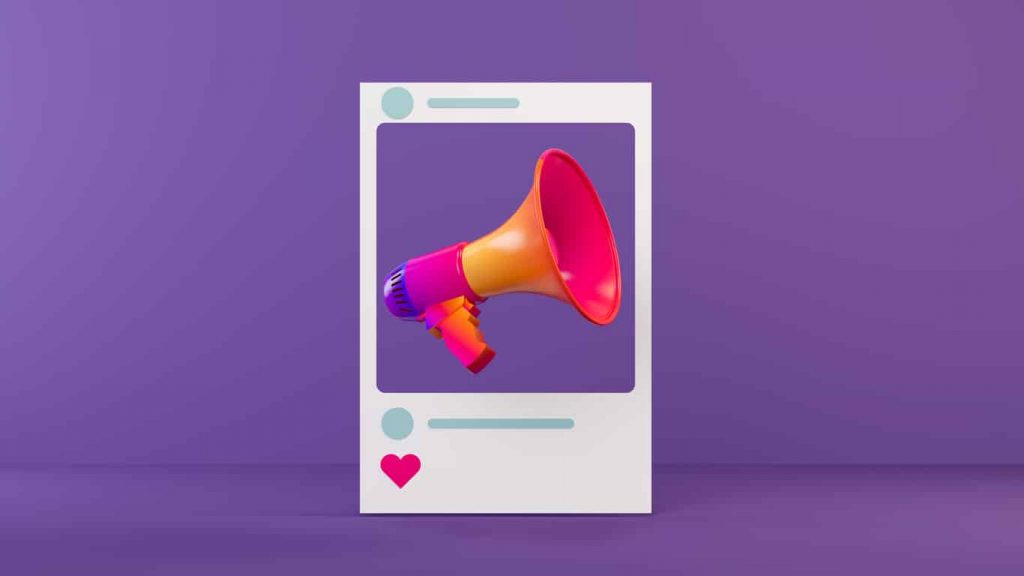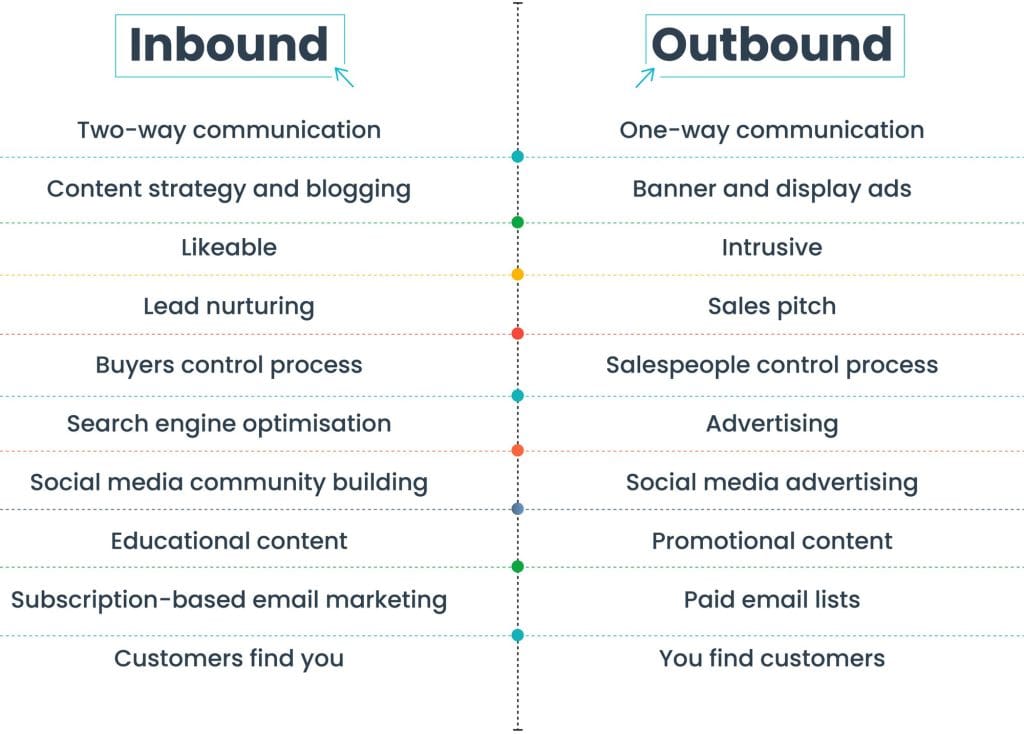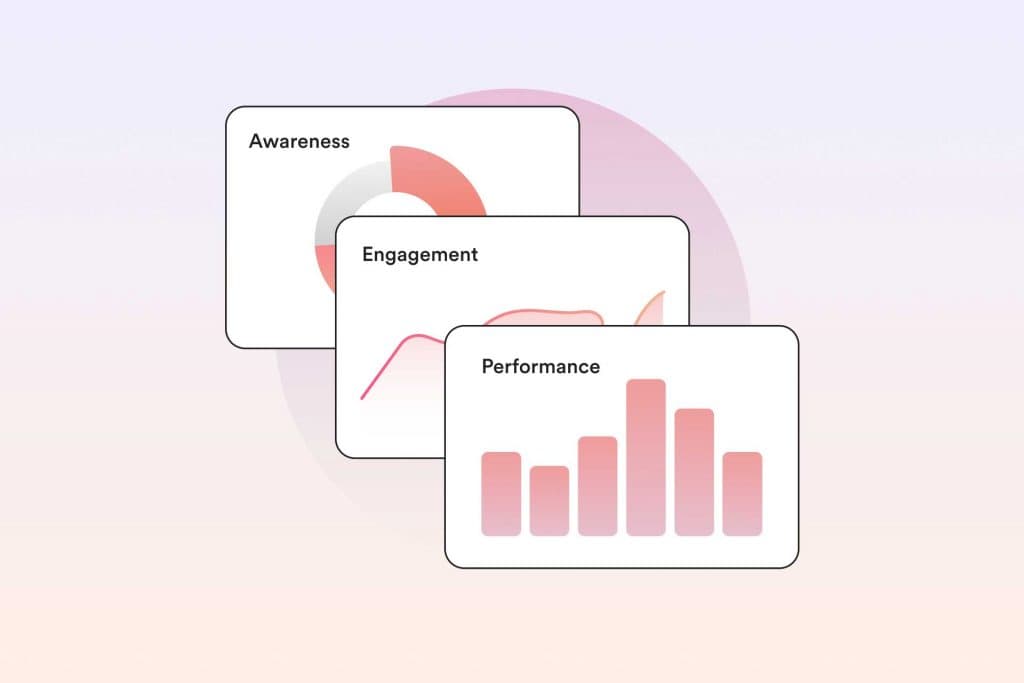8 Marketing Strategies for Small Business Owners
Marketing is crucial for the success of small businesses. It allows them to promote their products or services, reach their target audience, and drive growth. However, small business owners often face unique challenges when it comes to marketing. Limited budgets, lack of resources, and fierce competition can make it difficult to stand out in the market.
This article will discuss ten effective marketing strategies for small business owners to overcome these challenges and drive growth. These strategies will help you maximise your marketing efforts and achieve your business goals.
Table of Contents
1 – Online Marketing Strategies

Online marketing is essential for small businesses to reach their target audience and drive growth. The increasing use of the internet and digital technologies provides a cost-effective way to promote products and services, engage with customers, and build brand awareness.
Steps to Create Online Marketing Strategies for small business owners
Developing a comprehensive online marketing strategy requires careful planning and consideration. Here are the key steps you should follow:
Define Your Target Audience
- Identify your ideal customers by considering demographics, interests, and pain points.
- Conduct market research to understand their preferences, behaviour patterns, and online habits.
- Create buyer personas to understand your target audience better.
Select the Right Digital Channels
- Determine which digital platforms align with your target audience's preferences and where they are most active.
- Popular options include social media platforms (e.g., Facebook, Instagram), search engines (e.g., Google), email marketing, content marketing (e.g., blogging), and video marketing (e.g., YouTube).
- Consider each channel's unique features and strengths to maximise reach and engagement.
Set SMART Goals
- Define specific, measurable, attainable, relevant, and time-bound (SMART) goals aligning with your business objectives.
- Examples of SMART goals include increasing website traffic by X%, generating X number of leads per month, or achieving a specific conversion rate.
- Ensure your goals are realistic based on your available resources and budget.
Develop Compelling Content
- Create valuable content that resonates with your target audience's needs and interests.
- This can include blog posts, videos, infographics, podcasts, case studies, or whitepapers.
- Use storytelling techniques to engage your audience emotionally and make a lasting impression.
Implement Search Engine Optimisation (SEO)
- Optimise your website and content for search engines to improve visibility in organic search results.
- Conduct keyword research to identify relevant keywords that align with your business offerings.
- Incorporate these keywords into your website copy, meta tags, headings, and image alt text.
Leverage Social Media Marketing
- Establish a solid social media presence that aligns with your target audience.
- Create engaging content tailored for each platform and encourage user interaction.
- Utilise social media advertising options such as sponsored posts or targeted ads.
Utilise Email Marketing
- Build an email list of interested prospects and existing customers.
- Send regular newsletters or promotional emails with personalised content.
- Use automation tools to segment your email list based on customer behaviour or preferences.
Monitor and Measure Results
- Track key performance indicators (KPIs) such as website traffic, conversion rates, engagement metrics (likes/comments/shares), email open rates, etc.
- Utilise analytics tools like Google Analytics or social media insights to gain valuable insights into audience behaviour.
- Use data-driven insights to make informed decisions about optimising your online marketing activities.
By following these steps in developing an effective online marketing strategy for your small business, you can significantly enhance your chances of reaching the right audience at the right time with the right message.
Remember that consistency is critical when implementing online marketing strategies. Regularly review and refine your approach based on data-driven insights to ensure ongoing success in reaching your target audience effectively.
2 – Inbound Marketing

Inbound marketing is a cost-effective approach that small businesses can use to attract and engage customers. Unlike traditional outbound marketing tactics like cold calling or direct mail, inbound marketing focuses on creating valuable content that pulls customers towards your business. By providing helpful information and resources, you can build trust and relationships with potential customers, ultimately driving growth for your small business.
2.1 Crafting a Compelling Value Proposition
A strong value proposition is crucial for attracting and retaining customers. It communicates your product or service's unique benefits and value to your target market.
How to Create a Compelling Value Proposition
Here are some practical tips on how to create a compelling value proposition that resonates with your audience:
- Understand Your Target Market: Before crafting your value proposition, it's essential to have a deep understanding of your target market. What are their needs, desires, and pain points? What solutions are they looking for? You can tailor your value proposition to their needs by identifying these insights.
- Highlight Unique Selling Points: What sets your small business apart from competitors? Identify the key features or benefits that make your product or service unique. Whether it's superior quality, faster delivery times, or excellent customer service, emphasise these selling points in your value proposition.
- Focus on Customer Benefits: Instead of simply listing product features, focus on the benefits customers will enjoy by choosing your business. How will your product or service improve their lives or solve their problems? You can create a stronger emotional connection with your audience by highlighting these benefits.
- Be Clear and Concise: Keep your value proposition simple and easily understood. Avoid jargon or technical terms that may confuse potential customers. Use precise language and concise statements to communicate your value in a way that anyone quickly understands.
- Test and Refine: Crafting a compelling value proposition often requires iteration and testing. Gather customer feedback or conduct surveys to understand how well your value proposition resonates with them. Adjust to ensure that it captures their attention and motivates them to act.
Remember, your value proposition should be reflected in all aspects of your marketing strategy – from website copy to social media posts and email campaigns. Consistency is vital in communicating the unique value you provide to potential customers.
3 – Paid Advertising

Paid advertising is an essential strategy for small businesses to get quick results. It allows you to reach your target audience directly, boost brand awareness, and generate leads. In this section, we will explore how you can use your existing customer base for advertising to make the most of your paid ad campaigns and get the best return on investment (ROI).
3.1 Using Your Existing Customer Base for Advertising
Your current customers are a valuable resource when it comes to paid advertising. You can create targeted ad campaigns that resonate with your audience using the information and insights you have gathered from your interactions with them. Here are some tips on how to leverage your existing customer base:
- Divide Your Customers into Segments: Categorise your customers based on demographics, behaviour, or previous purchases. This will help you customise your ads to meet each group's needs and preferences.
- Create Personalised Ad Messages: Develop content that speaks directly to each segment. Highlight how your product or service addresses their problems or fulfils their desires.
- Find Similar Audiences: Use the data from your existing customers to identify potential new customers with similar characteristics. Platforms like Facebook or Google Ads allow you to create “lookalike audiences” based on this information, increasing the chances of converting them into paying customers.
- Target Interested Customers Again: Implement retargeting campaigns to reach out to customers who have shown interest in your business but haven't purchased yet. By displaying relevant ads across different platforms, you can remind them of their initial intent and encourage them to take action.
- Showcase Positive Reviews: Incorporate favourable customer reviews or testimonials into your ads. This social proof can influence trust and credibility among potential customers.
- Suggest Related Products or Services: Identify opportunities to upsell or cross-sell to existing customers through targeted ads. For example, if a customer has bought a product from a particular category, you can display ads for complementary products or accessories.
- Offer Exclusive Deals: Create special offers or discounts exclusively for your customers. This promotes customer loyalty and motivates them to make repeat purchases.
By utilising your existing customer base for advertising, you can develop highly focused campaigns that deliver better outcomes and higher ROI.
“To make paid advertising effective, you must understand what your existing customers want and tailor your ads accordingly.”
Remember to regularly analyse the performance of your paid ad campaigns and make necessary adjustments. Keep an eye on metrics like click-through rates (CTR), conversion rates, cost per acquisition (CPA), and return on ad spend (ROAS) to evaluate how well your campaigns are performing and identify areas where you can improve.
Next, we will discuss why having a well-designed and user-friendly website is crucial for establishing a solid online presence.
4 – Website Optimisation

A well-designed and user-friendly website is crucial for small businesses as it is the foundation of their online presence. A poorly optimised website can lead to missed opportunities and potential customers bouncing away. This section will explore practical tips on optimising your website's content and structure for better visibility and improved SEO performance.
4.1 Optimising Website Content
Effective website optimisation starts with understanding your target audience and their search intent. By conducting thorough keyword research, you can identify the terms and phrases your potential customers use to find similar products or services. Incorporating these keywords strategically throughout your website's content can help improve its visibility in search engine results.
Tips for optimising your website content:
- Create high-quality, informative content: Develop unique and valuable content that addresses the needs of your target audience. This could include blog posts, articles, case studies, or product descriptions that provide relevant information and solutions.
- Include relevant keywords: Incorporate keywords naturally into your content, including headings, subheadings, meta tags, image alt text, and URLs. However, avoid keyword stuffing, which can negatively impact user experience and search rankings.
- Optimise meta tags: Craft compelling meta titles and descriptions that accurately summarise the content of each page. These tags appear in search results and influence click-through rates.
- Use internal linking: Link relevant pages within your website to help users navigate easily and improve your site's overall structure.
- Ensure mobile responsiveness: With an increasing number of users accessing websites through mobile devices, it's essential to have a responsive design that adapts to different screen sizes.
4.2 Enhancing Website Structure
In addition to optimising your website's content, improving its structure is equally important for better visibility in search engines. Here are some key aspects to focus on:
Key aspects to focus on for enhancing website structure:
- User-friendly navigation: Ensure your website has clear and intuitive navigation menus so visitors can easily find what they want.
- Fast loading speed: Page speed is crucial to user experience and search rankings. Optimise images, minimise code bloat and leverage caching techniques to enhance loading speed.
- Optimise URL structure: Create clean, descriptive URLs incorporating relevant keywords instead of generic numbers or random characters.
- Create a sitemap: A sitemap helps search engines understand the structure of your website and index its pages more efficiently.
- Implement schema markup: Schema markup provides additional context about your web pages to search engines, resulting in enhanced visibility in rich snippets.
- Fix broken links: Regularly check for broken links within your website, as they can negatively affect user experience and SEO performance.
By optimising your website's content and structure, you can significantly improve its visibility in search results and attract more organic traffic from potential customers interested in what you have to offer.
Remember, effective website optimisation is an ongoing process that requires monitoring analytics data, staying updated with search engine algorithms, and regularly refining your strategies based on user feedback and industry trends.
5 – Social Media Marketing

Social media platforms like Facebook and Google My Business have become powerful tools for small businesses to reach and engage their target audience. With billions of active users on these platforms, companies can leverage social media marketing to increase brand visibility, drive website traffic, and generate leads. In this section, we will explore the role of social media in small business marketing and discuss how you can harness its power for maximum impact.
Exploration of the Role of Social Media Platforms
Social media platforms offer unique opportunities for small businesses to personally connect with their target audience. Here are some key points to consider:
- Broad reach: Facebook has over 2.8 billion monthly active users, making it an ideal platform to reach a large audience. Similarly, Google My Business allows businesses to showcase their products and services directly on Google search results, increasing visibility.
- Targeted advertising: Facebook advertising provides advanced targeting options enabling businesses to reach specific demographics, interests, and behaviours. This means you can tailor your ads to reach the people most likely to be interested in your products or services.
- Engagement and interaction: Social media platforms enable direct communication with your audience through comments, likes, shares, and private messages. This interaction helps build relationships, gain feedback, and foster customer loyalty.
Harnessing the Power of Organic Social Media
While paid advertising on social media can be effective, it's also essential to leverage organic tactics to grow your social media presence without breaking the bank. Here are some strategies for organic social media marketing:
- Create compelling content: Producing high-quality content that resonates with your target audience is crucial for organic social media success. Consider creating engaging posts, videos, images, or infographics that provide value or entertainment to your followers.
- Foster community engagement: Encourage conversations and interactions with your followers by asking questions, running contests or giveaways, and responding promptly to comments or messages. Building a sense of community around your brand helps create advocates who will organically promote your business.
- Collaborate with influencers: Partnering with influencers in your industry can help expand your reach and tap into their existing audiences. Identify influencers whose values align with your brand and collaborate on content creation or promotions.
- Utilise user-generated content: Encourage your customers to create content featuring your products or services and share it on their social media profiles using a branded hashtag. User-generated content adds authenticity to your brand and can attract new customers through word-of-mouth.
Small businesses can maximise their online presence and effectively engage their target audience by implementing these organic social media tactics alongside paid advertising.
Remember that consistency is critical when it comes to social media marketing. Regularly posting relevant content, engaging with followers, and analysing metrics will help you refine your strategy over time.
6 – Content Marketing Strategy

Content marketing is a powerful long-term approach to help small businesses build brand credibility and drive organic website traffic. It involves creating valuable and engaging content assets that resonate with their target audiences. This section will explore different types of content that small businesses can utilise and provide tips on effectively planning, producing, and promoting them for maximum impact.
6.1 Creating Valuable and Engaging Content Assets
To create content that resonates with your target audience, it's essential to understand their needs, preferences, and pain points. Here are some tips to help you create valuable and engaging content assets:
Identify your target audience.
Define your target audience based on demographics, interests, and behaviours. This will help you tailor your content to their specific needs and preferences.
Research relevant topics
Conduct keyword research to identify popular topics within your industry or niche. Tools like Google Keyword Planner or SEMrush can provide insights into search volumes and competition for specific keywords.
Choose the correct content formats.
Experiment with different content formats such as:
- Blog posts
- Videos
- Infographics
- Podcasts
- Ebooks
Different formats resonate with diverse audiences, so consider the most effective for your target audience.
Tell compelling stories
Storytelling is a powerful tool in content marketing. Use storytelling techniques to create narratives that captivate your audience and evoke emotions. Share customer success stories or behind-the-scenes glimpses into your business.
Provide actionable advice
Your content should provide practical value to your audience. Offer actionable advice, tips, or step-by-step guides that help them solve problems or achieve their goals.
Leverage user-generated content
Encourage customers to share their experiences with your products or services through testimonials, reviews, or user-generated content (UGC). UGC adds authenticity to your brand and helps build trust with potential customers.
Optimise for search engines.
Ensure your content is optimised for search engines by incorporating relevant keywords into your titles, headings, and body text. This will improve your chances of ranking higher in search engine results pages (SERPs).
Promote across multiple channels.
Once you've created valuable content assets, promote them across various channels, such as:
- Social media platforms
- Email newsletters
- Industry forums
- Guest blogging opportunities
This will help increase visibility and drive traffic back to your website.
Remember that consistency is key in content marketing. Develop a consistent publishing schedule and stick to it to build momentum and engage with your audience regularly.
“Content marketing is not just about creating great content; it's about creating great relationships.”
Joe Pulizzi
You can build trust, credibility, and loyalty over time by consistently providing valuable, engaging content that resonates with your target audience.
7 – Low-Cost Guerrilla Tactics

This section will explore creative examples of low-cost marketing techniques that small businesses can implement with limited resources. These guerrilla tactics can help small businesses reach their target audience in unique and cost-effective ways, allowing them to stand out from the competition without breaking the bank.
7.1 Utilising Door-to-Door Flyers and Posters
One effective offline tactic that small businesses can still leverage in today's digital age is distributing door-to-door flyers and posters in public spaces. While online marketing has gained significant popularity, many potential customers may still be inactive online or prefer more traditional forms of advertising. By strategically using door-to-door flyers and posters, small businesses can target specific geographic areas and connect with their local community.
Here are some tips on utilising door-to-door flyers and posters for your marketing campaigns:
- Define your target audience: Before designing your flyers or posters, it's crucial to define your target audience clearly. Understanding your ideal customers' demographics, interests, and pain points will help you create compelling messaging that resonates with them.
- Craft an attention-grabbing headline: The headline is the first thing people will see on your flyer or poster, so make it catchy and engaging. Use powerful words or ask thought-provoking questions to pique curiosity and entice recipients to read further.
- Focus on benefits: Highlight the help of your product or service rather than just listing features. Communicate how your offering can solve problems or improve potential customers' lives.
- Keep it concise: People have limited attention spans, so keep your message clear and concise. Use bullet points or short paragraphs to convey critical information quickly and effectively.
- Include a solid call to action: Tell recipients what they need to do next after reading the flyer or poster. Whether visiting your store, calling for more information, or placing an order online, make sure the call to action is prominent and easy to follow.
- Design with visuals in mind: Use eye-catching visuals, such as high-quality images or illustrations that align with your brand identity. Visuals can grab attention and make your marketing materials more memorable.
- Consider distribution timing: Timing is essential when distributing door-to-door flyers and posters. Choose days and times when people will likely be at home, such as weekends or evenings after work.
- Track response rates: To measure the effectiveness of your door-to-door campaigns, consider including a unique discount code or promo offer on the flyers or posters. This way, you can track how many people redeem the offer and assess the return on investment.
Remember that door-to-door flyers and posters are just one example of low-cost guerrilla tactics available to small business owners. Depending on your industry and target audience, you may explore unconventional marketing strategies, such as sidewalk chalk art, flash mobs, or even hosting pop-up events in partnership with local businesses.
By thinking creatively and leveraging low-cost marketing techniques, small business owners can maximise their reach and engage with their target audience without spending a fortune on advertising.
8 – Nurturing Customer Relationships

Providing exceptional customer experiences and nurturing relationships with your customers is crucial for the long-term success of your small business. Satisfied customers become repeat buyers and influential brand advocates, spreading positive word-of-mouth and referring new customers to your business. This section will explore strategies for building strong referral networks and leveraging satisfied customers as valuable assets to drive growth.
Emphasising Exceptional Customer Experiences
The foundation of nurturing customer relationships lies in delivering exceptional experiences at every touchpoint. When customers feel valued and appreciated, they are more likely to become loyal supporters of your brand. Here are some key strategies to consider:
- Personalize interactions: Take the time to understand your customers' needs and preferences. Use CRM systems or customer databases to store relevant information and tailor your communications accordingly.
- Provide prompt and helpful customer support: Respond promptly to customer inquiries, address their concerns, and go the extra mile to solve their problems. Use various phone, email, live chat, or social media channels to ensure accessibility.
- Offer value additions for customer satisfaction: Surprise and delight your customers by providing unexpected value additions such as freebies, discounts, or exclusive offers. This enhances their experience and encourages them to share their positive experiences with others.
Building Strong Referral Networks
Word-of-mouth referrals can be a powerful driver of growth for small businesses. By cultivating strong referral networks, you can tap into the existing customer base of complementary companies and expand your reach. Here are some strategies to consider:
- Identify complementary businesses: Look for companies that target a similar customer base but offer different products or services.
- Establish mutually beneficial partnerships: Reach out to these complementary businesses with a proposal for collaboration.
- Implement quid-pro-quo referrals: Set up referral programs where you reward customers who refer new clients to your business with exclusive discounts, freebies, or other incentives.
- Leverage online platforms: Use Yelp, Google My Business, or industry-specific directories to increase visibility within your local community and encourage reviews and recommendations from satisfied customers.
Remember that building strong referral networks takes time and effort. It requires nurturing relationships with complementary businesses and consistently delivering exceptional value to partners and customers.
By providing exceptional customer experiences and leveraging satisfied customers as brand advocates, you can create a strong network of loyal supporters who will contribute to your business's growth and help you establish a positive reputation within your community.
Conclusion
In this article, we have explored various marketing strategies specifically tailored for small business owners. Here are the key takeaways:
Implement a well-rounded marketing strategy.
Small businesses should adopt a holistic approach to marketing by combining both online and offline tactics. This ensures that you reach your target audience through multiple channels and maximise your chances of success.
Leverage existing assets
Your website and customer base are valuable resources that can be used to drive growth. Optimise your website for better visibility on search engines and create engaging content that resonates with your target audience. Additionally, leverage customer data and segmentation to optimise your paid advertising campaigns and maximise return on investment.
Consistently deliver value
Providing exceptional customer experiences is crucial for building strong relationships and turning satisfied customers into brand advocates. You can foster loyalty and generate positive word-of-mouth referrals by consistently delivering value to your target audience.
Remember, marketing is an ongoing process that requires constant evaluation and adaptation. Stay informed about the latest trends and technologies in the industry to ensure that your strategies remain effective.
As a small business owner, staying agile and open to experimentation is essential. Test different marketing tactics, analyse the results, and refine your strategies accordingly. With dedication and perseverance, you can overcome small businesses' challenges in marketing their products or services and drive sustainable growth.
So, implement these marketing strategies for your small business and watch it thrive!
Remember: The ultimate guide to marketing strategies for small business is not a one-size-fits-all solution. Adapt these strategies to fit the unique needs of your company and industry.
